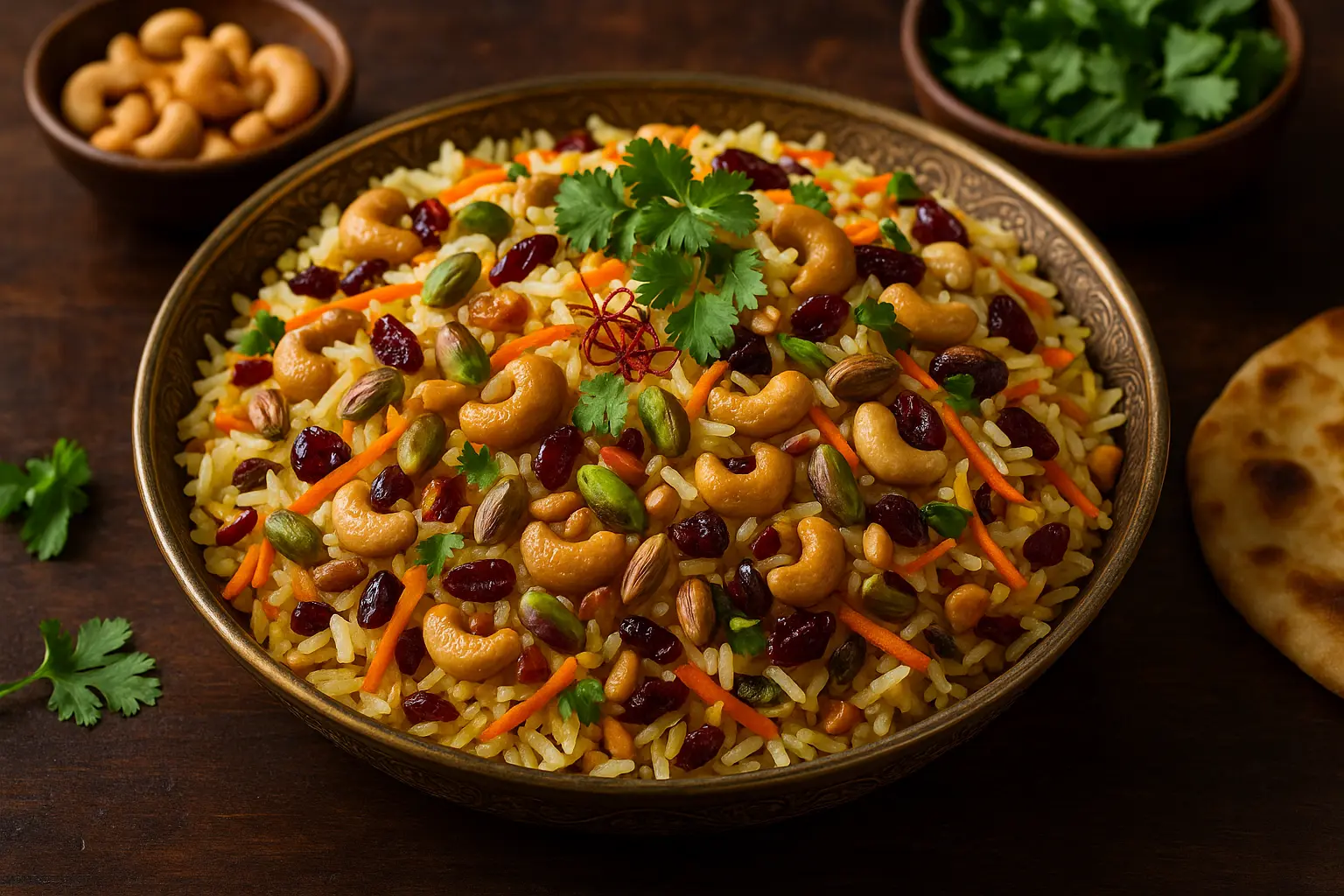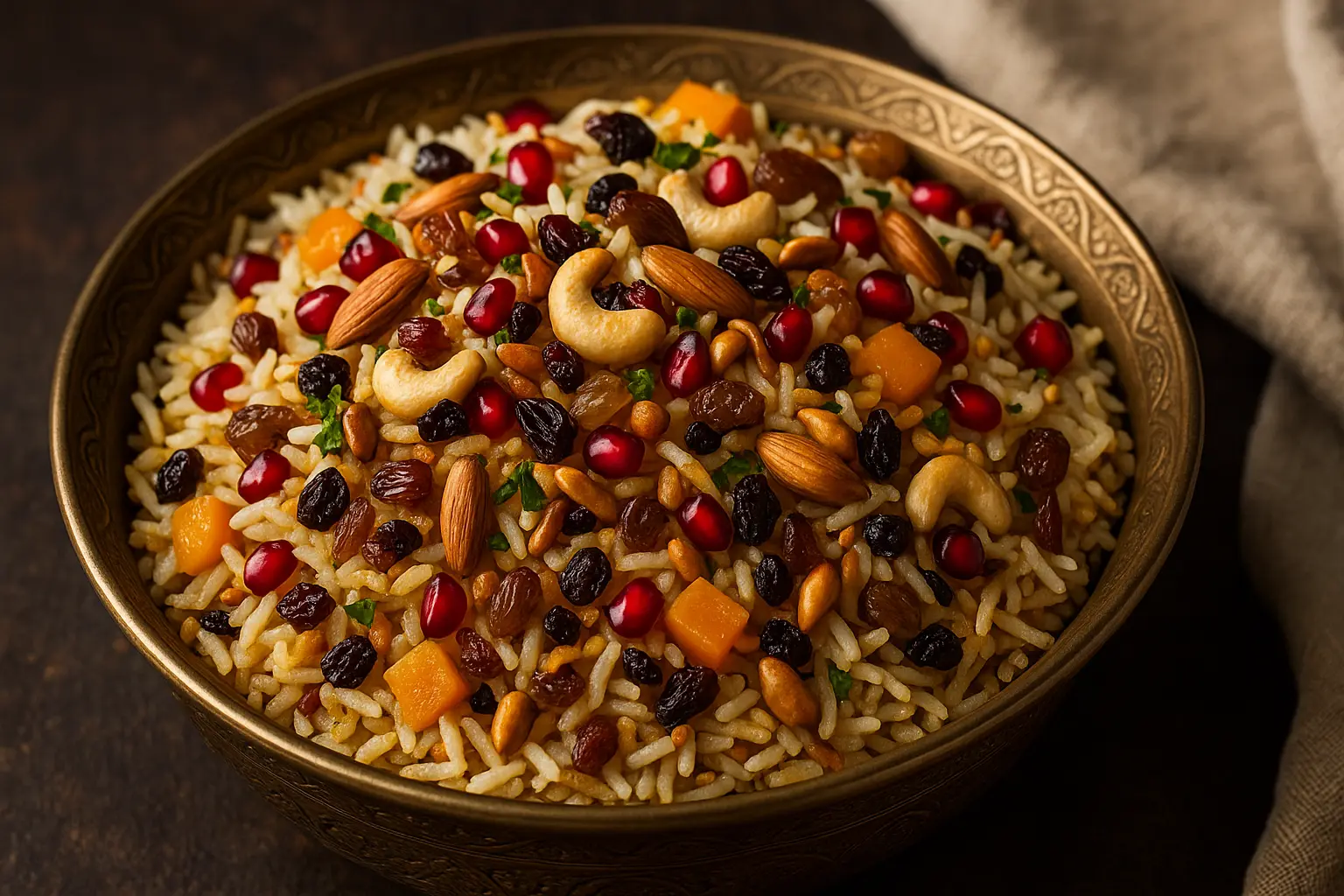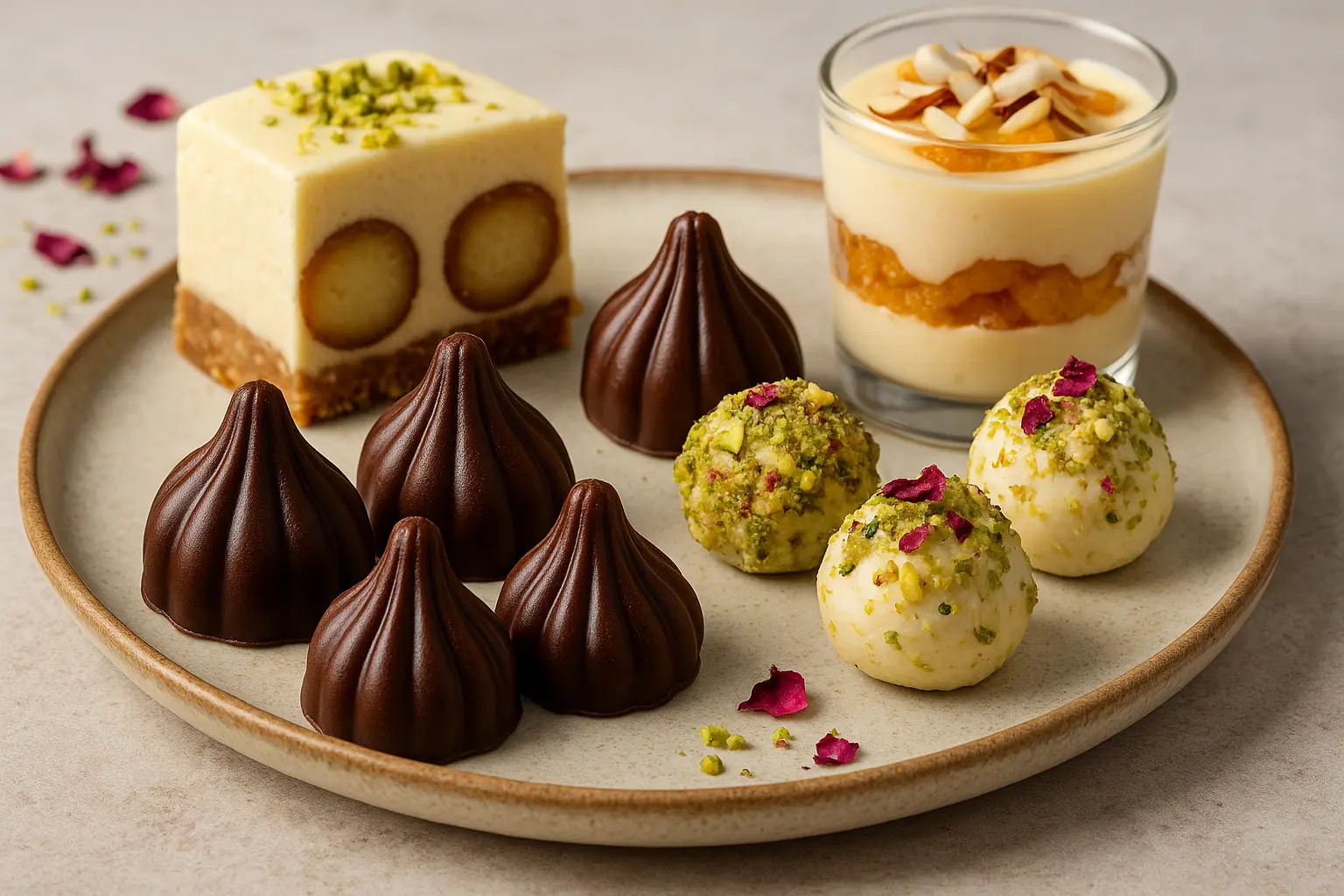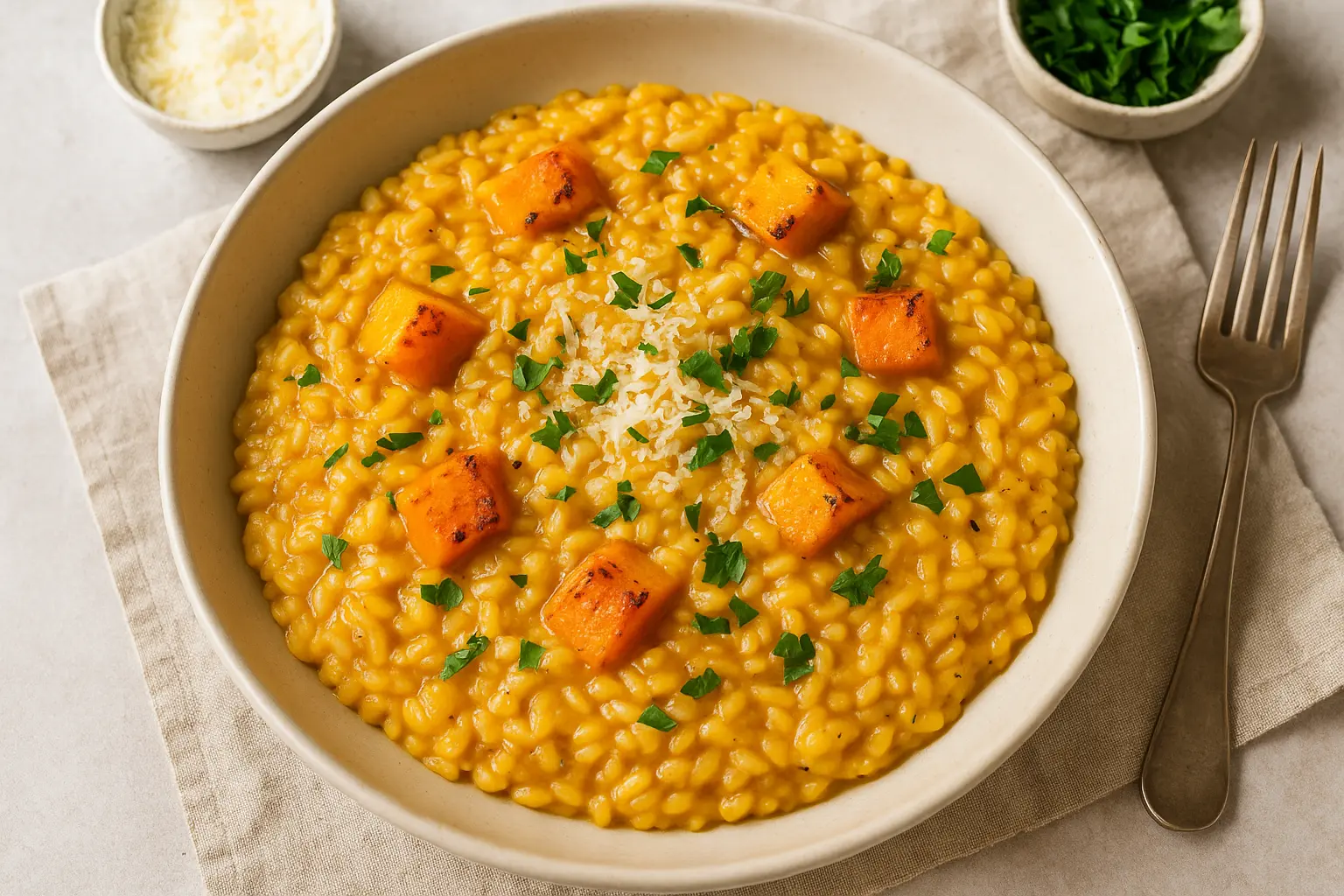Rice has always been more than just a staple grain—it is a symbol of celebration, prosperity, and togetherness in countless cultures. When transformed into a pilaf, rice becomes a centerpiece dish worthy of any special occasion. Aromatic spices, colorful vegetables, nuts, dried fruits, and proteins come together to create festive rice pilafs that delight the senses. Whether it’s a saffron-infused biryani in India, jeweled Persian rice at weddings, or Mediterranean rice with herbs and citrus for family feasts, pilafs are versatile, elegant, and full of meaning.
This blog dives deep into the world of festive rice pilafs, exploring their history, cultural significance, cooking methods, and global variations. You’ll also find tips to perfect your own pilafs at home, recipe ideas for different occasions, and pairings that make them unforgettable.

1. The Essence of Pilaf: More Than Just Rice
At its core, pilaf (or “pulao,” “plov,” “pilau”) is a method of cooking rice where grains are sautéed in oil or butter, then simmered in seasoned broth until fluffy. Unlike plain boiled rice, pilaf is layered with aromatics like onion, garlic, and spices that infuse flavor into each grain.
- Texture: Each grain remains separate, never mushy.
- Aromatics: Onions, garlic, cinnamon, cardamom, or herbs provide depth.
- Broth: Cooking in stock (chicken, vegetable, or beef) enhances richness.
- Add-ins: Nuts, dried fruits, meat, or seafood elevate it to festive fare.
This technique traveled across the Silk Road, evolving in regions like Central Asia, the Middle East, India, and eventually Europe. Each culture added its own identity to the dish, making pilaf synonymous with celebration.
2. Cultural Significance of Festive Rice Pilafs
India: Biryani & Pulao
Biryani is one of India’s most famous festive rice dishes, layered with marinated meats, fragrant spices, and saffron. It’s a highlight at weddings, Eid celebrations, and family feasts. Pulao, simpler yet aromatic, often features vegetables, paneer, or light spices for festive dinners.
Persia (Iran): Jeweled Rice
Known as “Shirin Polo” or “Jeweled Rice,” Persian pilafs are studded with orange zest, barberries, pistachios, and almonds. They symbolize wealth and abundance, often served at weddings and Nowruz (Persian New Year).
Middle East: Spiced Rice Pilafs
In Lebanon, Syria, and Jordan, rice pilafs are enriched with vermicelli noodles, cinnamon, and allspice. Lamb, beef, or chicken may be layered for communal feasts.
Central Asia: Plov
Uzbek plov is hearty, with rice, lamb, carrots, and onions cooked together in a single pot. It’s served at large gatherings, symbolizing hospitality.
Mediterranean: Citrus & Herb Pilafs
Greek and Turkish pilafs often include lemon zest, dill, parsley, or pine nuts. They bring brightness to festive tables, often accompanying roasted meats.
3. Essential Ingredients for Festive Pilafs
Creating a pilaf that feels “festive” means layering flavors and textures:
- Rice: Basmati, jasmine, or long-grain for fluffiness.
- Spices: Saffron, cinnamon, cardamom, cumin, or bay leaves.
- Nuts & Seeds: Almonds, pistachios, pine nuts, cashews for crunch.
- Dried Fruits: Raisins, apricots, dates, cranberries for sweetness.
- Aromatics: Onion, garlic, ginger, herbs like mint, dill, cilantro.
- Broth: Chicken, vegetable, or lamb stock for richness.
- Luxury Touches: Ghee, clarified butter, citrus peel, or rose water.
These ingredients not only create depth but also bring symbolism of prosperity, abundance, and joy.
4. Cooking Methods: From Stovetop to Oven-Baked
- Stovetop Pilaf: The traditional method, sautéing rice in fat before simmering in broth.
- Layered Pilaf (Biryani): Par-cooked rice layered with meat and spices, finished in sealed pots (dum cooking).
- Oven-Baked Pilaf: Rice baked with broth and seasonings for hands-off cooking.
- Instant Pot / Pressure Cooker Pilaf: A modern solution for busy festive cooking, delivering consistent results.
5. Global Variations of Festive Pilafs
Indian Festive Pilafs
- Hyderabadi Biryani: Fragrant basmati layered with marinated chicken or lamb, saffron milk, fried onions.
- Vegetable Pulao: Colorful with peas, carrots, beans, and cashews, perfect for vegetarian occasions.
- Kashmiri Pulao: Sweet and savory with saffron, nuts, and dried fruits.
Persian & Middle Eastern
- Shirin Polo: With orange zest, pistachios, and barberries.
- Kabsa (Saudi Arabia): Rice cooked with lamb, tomatoes, and aromatic spices.
- Lebanese Rice with Vermicelli: Festive when topped with toasted nuts and served with roasted meats.
Central Asian
- Uzbek Plov: Hearty lamb and carrot pilaf cooked in a kazan (large pot).
- Azerbaijani Shah Plov: Rice encased in a crispy lavash or filo crust, dramatic in presentation.
Mediterranean & European
- Greek Lemon Rice Pilaf: With fresh herbs and citrus for Easter or festive dinners.
- Spanish Arroz con Pollo: Rice with chicken, saffron, and peppers—colorful and celebratory.
6. Tips to Perfect Your Festive Pilaf
- Choose the Right Rice: Long-grain basmati is ideal for Indian and Persian styles.
- Soak Before Cooking: Reduces starch, ensuring fluffy grains.
- Toast Rice First: Sauté in ghee or butter before adding liquid for nutty flavor.
- Balance Sweet & Savory: Use dried fruits with warm spices for depth.
- Finish with Garnish: Fresh herbs, fried onions, nuts, or saffron milk elevate the dish visually and aromatically.
7. Festive Pilaf Recipes for Special Occasions
7.1 Saffron Jeweled Rice (Persian Shirin Polo)
Ingredients:
- Basmati rice
- Saffron threads soaked in warm water
- Orange peel, slivered almonds, pistachios, barberries
- Ghee or butter
Method:
Cook rice until fluffy. In ghee, sauté nuts and fruits. Mix half into rice, layer with saffron water, and garnish with the remaining toppings.
7.2 Hyderabadi Chicken Biryani
Ingredients:
- Basmati rice
- Chicken marinated in yogurt, ginger, garlic, spices
- Fried onions, saffron milk
- Fresh mint and coriander
Method:
Par-cook rice. Layer with marinated chicken and fried onions. Seal pot and cook on low heat until flavors meld.
7.3 Mediterranean Lemon Herb Pilaf
Ingredients:
- Long-grain rice
- Olive oil, onion, garlic
- Lemon zest, dill, parsley
- Toasted pine nuts
Method:
Cook rice in vegetable broth with aromatics. Finish with lemon juice, zest, herbs, and nuts.
7.4 Kashmiri Sweet Pilaf
Ingredients:
- Basmati rice
- Milk, saffron, sugar
- Raisins, cashews, almonds
- Cardamom pods
Method:
Simmer rice in milk and saffron. Sweeten lightly and stir in dried fruits and nuts. Serve warm as a celebratory side.
8. Perfect Pairings with Pilafs
- Meat Pairings: Roast lamb, chicken kebabs, grilled seafood.
- Vegetarian Pairings: Paneer curries, lentil stews, roasted vegetables.
- Condiments: Raita, chutneys, yogurt sauces, pickles.
- Drinks: Spiced teas, pomegranate juice, or festive mocktails.
9. Pilaf as a Symbol of Celebration
Across the globe, rice pilafs appear at the heart of joyous gatherings. Their shared symbolism—abundance, unity, and prosperity—makes them timeless festive dishes. Whether preparing a Persian jeweled rice for a wedding, a Hyderabadi biryani for Eid, or a lemony pilaf for Easter, these dishes carry stories, traditions, and love.
10. Conclusion
Festive rice pilafs are not just food—they are memories on a plate. Their colorful presentations, fragrant aromas, and celebratory associations make them perfect for special occasions. By understanding the cultural roots, key ingredients, and cooking methods, you can bring the world’s festive flavors to your own table.
So the next time you’re planning a holiday meal, wedding feast, or intimate dinner party, remember: a pilaf can turn rice into a celebration.
Leave a comment
Your email address will not be published. Required fields are marked *




















